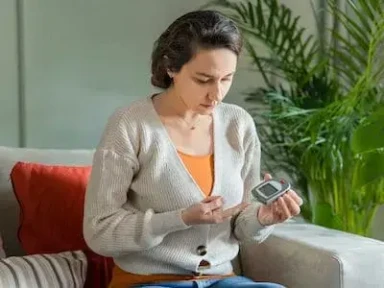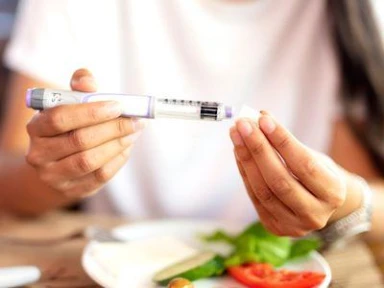Case 2 T1D
Patient case 2 ─ Type 1 Diabetes (T1D)
Patient Details
-
Demographics: 57-year-old female, with 23 years duration of T1D
-
Glucose monitoring and glycated hemoglobin (HbA1c) levels:
– Previous HbA1c had ranged from 7.6% to 8.4% over the past 2 years
– She had been followed by another endocrinologist for several years and treated with metered dose insulin (MDI) therapy
– Patient was already using a rtCGM device -
Medical history: Moderate nonproliferative retinopathy and she was overweight with her initial weight at 83.5 kg (body mass index = 29.7)
-
Glycemic management: Insulin glargine (30 units per day/0.36 units/kg/day) and insulin aspart (10–12 units at each meal)
-
Initial rtCGM from past 90 days:
– Time in range (70–180 mg/dL) = 48% (i.e., below the established target of >70%) -
Glucose profile:
– Persistent hyperglycemia seen throughout the day and night
– A separate download report indicated that patient’s high glucose alert was set at 280 mg/dL and the alert ‘repeat’ feature was turned off
– Patient often ignored the alert and seldom looked at the CGM data -
Patient’s need to improve her glycemic status in order to prevent progression of her retinopathy was discussed and patient agreed to: (1) lower her high alert threshold to 200 mg/dL;(2) turn on the alert repeat feature; (3) transition from metered dose insulin (MDI) to insulin pump therapy with an older insulin patch device, interfacing with her rtCGM
-
Patient’s infusion rate for basal insulin coverage was set at 1.2 units/hour
-
During the next month, weekly phone consults were carried out to discuss her progress, increase her basal dosage (as needed), and address any problems or questions with her new therapy.
-
At one-month follow-up visit: Patient’s basal infusion had been increased to 1.5 units/hour; notable improvement in her overall glycemic management was observed, with 79% of glucose values within target, significant reductions in %TAR without an increase in hypoglycemia, and a relatively flat glucose profile with most glucose values within target range
-
Patient reviewed her data several times a day and always responded to her high glucose alerts.
Learnings
-
Patient was living with poor glycemic control over several months; this clearly illustrated the impact of therapeutic inertia on glycemic management.
-
Patient’s previous clinician (responsible for lack of appropriate goal-setting and timely intensification of therapy) and patient’s lack of engagement with her diabetes self-management contributed to her suboptimal management.
-
Patient’s daily use of rtCGM data and the retrospective analyses allowed rapid identification of the most significant glycemic pattern (e.g. ‘nighttime highs’) and addressal of her hyperglycemia in a step-wise approach, and also improved her understanding about the impact of her adherence to treatment (e.g. use of alarms/alerts) ultimately impacting her glycemic control.

.png/jcr:content/science%20hero%20(1).png)


.jpg/jcr:content/diabetes%20thumb%20new%20(1).jpg)